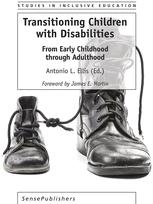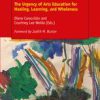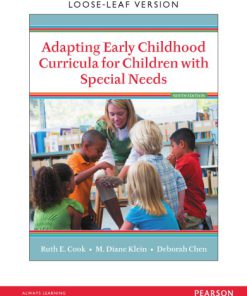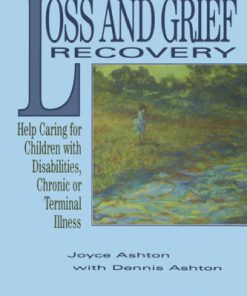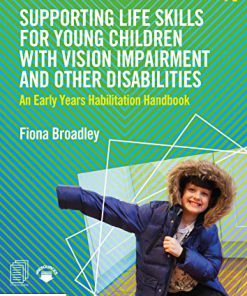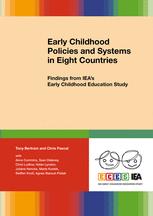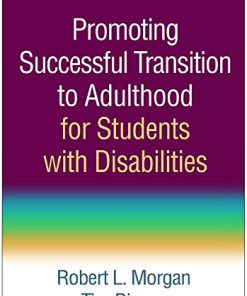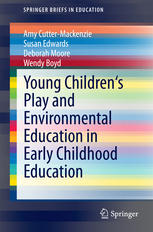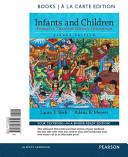Transitioning Children with Disabilities From Early Childhood through Adulthood 1st Edition by Antonio L Ellis ISBN 9463511342 9789463511346
$50.00 Original price was: $50.00.$25.00Current price is: $25.00.
Transitioning Children with Disabilities From Early Childhood through Adulthood 1st Edition by Antonio L Ellis – Ebook PDF Instant Download/Delivery: 9463511342, 9789463511346
Full download Transitioning Children with Disabilities From Early Childhood through Adulthood 1st Edition after payment
Product details:
ISBN 10: 9463511342
ISBN 13: 9789463511346
Author: Antonio L Ellis
This book is an authoritative volume of scholarship through qualitative and quantitative methodologies on postsecondary transition services for a diverse readership. The editor’s intended audience is composed of students with disabilities, school administrators, special education coordinators, colleges and university faculty, staff, and administrators, among other scholars, practitioners, and advocates. Readers of this volume will be educated on the postsecondary transition process, and the lifelong commitment of educators who guides students with disabilities through their rigorous, yet rewarding journey. This book also can be used by student personnel administrators, employers, student retention coordinators, and workforce development professionals to improve the implementation of postsecondary transition services. The importance of comprehensive transition planning for students with disabilities is the impetus for bringing this collaborative effort to print. Topics in this volumehighlight areas that have critical implications for children and adolescents’ preparation for adulthood. Contributors’ presents potent research regarding various topics addressing P-16 students’ needs, and have been active practitioners in both areas – transition services and disabilities as defined under the Individuals with Disabilities Education Act (IDEA) of 2004. Ultimately, this book is a collection of interrelated chapters that offer rich content and insights into current trends for individuals with disabilities who are moving through various stages of their lives.
Transitioning Children with Disabilities From Early Childhood through Adulthood 1st Table of contents:
1. IT TAKES TWO: Principals and Special Education Educators Creating Transitional Spheres
INTRODUCTION
TRANSITION AND POST SCHOOL OUTCOMES
PRINCIPAL’S ROLE
INSTRUCTIONAL LEADERSHIP FRAMEWORK
PROFESSIONAL DEVELOPMENT
SPECIAL EDUCATION EDUCATORS AND PRINCIPALS TOGETHER FOCUSED ON IMPROVING TRANSITION FRAMEWORK
TRANSITIONAL SPHERES
REFERENCES
2. TRANSITIONING TO A NEW REGIME OR MORE OF THE SAME?: Examining the Efficacy of the Tennessee Diplo
INTRODUCTION
UNDERSTANDING THE HISTORY OF RACE, SPECIAL EDUCATION REFORM AND EDUCATIONAL EQUITY
Special Education Reform and Race
Disproportionality and Special Education Reform
Charter Schools and Race
Charter Schools and Students with Disabilities
Conceptualizing Regime in Education Policy
DATA AND METHODOLOGY
FINDINGS
NOT QUITE A REGIME CHANGE, BUT SUBSTANTIAL GROWTH
REFERENCES
3. PERSONNEL PREPARATION IN TRANSITION EDUCATION: A High Need for Historically Black Colleges and Un
INTRODUCTION
THE MANDATE AND NEED FOR TRANSITION EDUCATION
The Individuals with Disabilities Education Act
Transition Education for CLD Students
PREPARATION FOR PERSONNEL SERVING CLD STUDENTS
What Transition Educators Know and Do
Culturally Responsive Transition Educators
Postsecondary Transition Education at Predominantly White Institutions
Transition Education at HBCUs
HBCUs as Culturally-Responsive Institutional Links
CONCLUSION AND FUTURE DIRECTIONS IN TRANSITION EDUCATION FOR HBCUS
REFERENCES
4. BEYOND COMPLIANCE: Supporting the Transition of English Language Learners with Special Needs
INTRODUCTION
IDENTIFICATION
FEDERAL LEGISLATION
Second Language Legislation
Special Education Law
Culturally and Linguistically Diverse Exceptional Learners and the Law
SECOND LANGUAGE ACQUSITION
EFFECTIVE TRANSITIONAL PLANNING
REFLECTIONS AND FUTURE DIRECTIONS
REFERENCES
5. THE STATE OF FEDERAL AND STATE ACCOUNTABILITY SYSTEMS THAT SUPPORT P-12 AND POSTSECONDARY TRANSIT
INTRODUCTION
FEDERAL AND STATE POLICIES
Existing Policies Guiding Program Development and Transition Services
Connecting Transition Services to the Needs of English Language Learners with Disabilities
Using Data to Support Effective Transitioning of ELLs with Disabilities in a Career or College Progr
Supporting Language Proficiency and Disability Needs
Recommendations
REFERENCES
6. THE ROLE OF TECHNOLOGY ON PREPARING STUDENTS WITH LANGUAGE-BASED LEARNING DIFFERENCES FOR TRANSIT
INTRODUCTION
REVIEW OF LITERATURE
HISTORY OF TECHNOLOGY FOR STUDENTS WITH DISABILITIES
TECHNOLOGY COORDINATORS INFLUENCE ON TECHNOLOGY USE
TECHNOLOGY AND SOCIAL CAPITAL
TRANSITIONING TO HIGH SCHOOL
RESEARCH DESIGN
PARTICIPANTS
METHODOLOGY
FINDINGS
ALPHA SCHOOL
USEFUL TECHNOLOGIES FOR TEACHERS
USEFUL TECHNOLOGIES FOR STUDENTS
TROUBLESHOOT TECHNOLOGIES INDEPENDENTLY
GRADE INFLATION
BETA SCHOOL
TECHNOLOGIES PREPARE STUDENTS FOR COLLEGE AND CAREER
LOW AMOUNT OF IEPS
DELTA SCHOOL
TRANSITION STUDENTS PREPARE FOR HIGH ENTRANCE EXAMS
HIGH DEGREE OF KNOWLEDGE USING INSTRUCTIONAL TECHNOLOGIES
GAMMA SCHOOL
LEARNING MANAGEMENT SYSTEM CONSISTENCY
TECHNOLOGIES HELPS STUDENTS WITH LEARNING DISABILITIES ORGANIZE THEMSELVES
ALL SCHOOLS
DISCUSSION
LIMITATIONS
FUTURE RESEARCH
CONCLUSION
REFERENCES
7. THE ROLE OF LITERACY ON THE POSTSECONDARY OPPORTUNITIES OF STUDENTS WITH HIGH INCIDENCE DISABILIT
INDIVIDUALS WITH HIGH-INCIDENCE DISABILITIES
Disproportionality
CURRENT LITERACY LEVELS FOR SECONDARY STUDENTS
Literacy Development
TRANSITION AND EDUCATION LAWS
IMPORTANCE OF ADULT LITERACY FOR POSTSECONDARY EDUCATION
Postsecondary Challenges
Postsecondary Opportunities
Self-advocacy
Literacy
Reading
Written expression
RECOMMENDATIONS FOR TRANSITION
CONCLUSION
REFERENCES
8. TRANSITIONING TO KINDERGARTEN: Improving Outcomes for Preschool Children with Behavioral Challeng
INTRODUCTION
KINDERGARTEN TRANSITION: CULTURAL CONSIDERATIONS
PROVIDE OPPORTUNITIES FOR COLLABORATION
Collaboration among Educators
Collaboration with Parents
FOCUS ON SOCIAL EMOTIONAL LEARNING
SUMMARY AND CONSIDERATIONS
IMPLICATIONS
REFERENCES
9. RETHINKING THE PARADIGM: Comprehensive Transition from Birth to Adulthood
EVIDENCE BASED PRACTICES ACROSS THE LIFESPAN
Student-focused Planning
Interagency Collaboration
Family Engagement
Program Structure
CONCLUSION
REFERENCES
10. INCREASING CULTURAL RESPONSIVENESS: Improving Transition Outcomes for Culturally and Linguistica
INTRODUCTION
STUDENT-FOCUSED PLANNING AND STUDENT DEVELOPMENT
Foster Self-Determination
Develop Social Skills and Self-Advocacy Skills
Improve Opportunities for Postsecondary Education, Vocational Training, and Employment
INCREASE FAMILY INVOLVEMENT
Engage CLD Parents in the Transition Process
IMPROVE PROFESSIONAL DEVELOPMENT
Culturally Responsive Practices
Knowledge of IEP Process and Transition Planning
IMPROVE SYSTEMS COLLABORATION
FUTURE CONSIDERATIONS AND IMPLICATIONS
CONCLUSION
REFERENCES
11. USING THE TAXONOMY FOR TRANSITION PROGRAMMING 2.0 TO GUIDE TRANSITION EDUCATION
HISTORY
METHODS
Taxonomy for Transition Programming 2.0
TAXONOMY FOR TRANSITION PROGRAMMING 2.0
DESCRIPTION OF TAXONOMY 2.0 PRACTICES
Student-focused Planning
Student Development
Interagency Collaboration
Family Engagement
Program Structures
CONCLUSION
REFERENCES
12. TRANSITIONING FROM HIGH SCHOOL TO COLLEGE: A Dance for Students with Learning Disabilities
INTRODUCTION
PURPOSE STATEMENT
PROBLEM STATEMENT
RESEARCH QUESTIONS
LITERATURE REVIEW
METHODOLOGY
FINDINGS
CONCLUSIONS/RECOMMENDATIONS
IMPLICATIONS FOR EDUCATION
REFERENCES
APPENDIX
13. REACHING HIGHER: College and Career Readiness for African American Males with Learning Disabilit
SPECIAL EDUCATION SERVICES
AFRICAN AMERICAN MALES IN SPECIAL EDUCATION AND/OR GIFTED EDUCATION
THE ROLES OF SCHOOL PSYCHOLOGISTS AND SCHOOL COUNSELORS IN SPECIAL EDUCATION
School Psychologists
School Counselors
COLLABORATION ON COLLEGE AND CAREER READINESS
IMPLICATIONS FOR POLICY AND PRACTICE
Policy Implications
CONCLUSION
NOTE
REFERENCES
14. ONE IN THE SAME
COMMON GROUND
EVOLUTION
People also search for Transitioning Children with Disabilities From Early Childhood through Adulthood 1st:
transitioning children with disabilities
transition services for students with disabilities in texas
transition for students with intellectual disabilities
what are transition services for students with disabilities
example of a transition plan for students with disabilities
Tags:
Antonio L Ellis,Transitioning Children,Disabilities,Childhood,Adulthood
You may also like…
Education Studies & Teaching - Special Education
Adapting Early Childhood Curricula for Children with Special Needs Ninth Edition Ruth E. Cook
Education Studies & Teaching - Education - General & Miscellaneous
Relationships & Lifestyle
Politics & Philosophy - Others
Medicine - Therapy
Education Studies & Teaching
Education Studies & Teaching - Educational Guidance & Counseling
Medicine
Infants and Children: Prenatal Through Middle Childhood, Books a la Carte Edition Laura E. Berk


